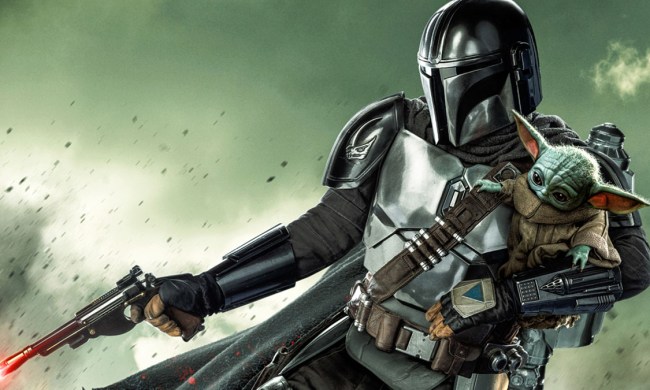The flagship series on Disney+, The Mandalorian (and especially one little green alien) has captured our hearts. Following an eventful first three episodes, the latest mission for our bounty hunter hero (played by Game of Thrones actor Pedro Pascal) unearths a secret that could have major repercussions in the Star Wars universe.

There’s a lot to absorb in each episode of The Mandalorian, so here’s a breakdown of some noteworthy elements in episode 4. (Note: There will be discussion of plot points from the episode in the following text, so consider this a spoiler warning. You can also go back and read our recaps of Episode 1, Episode 2, and Episode 3.)
A short break

After the explosive events of the previous episode, The Mandalorian and Baby Yoda (which is what we’re calling the little alien until “the kid” gets an official name) attempt to lay low for a few months on a remote planet, but discover that the backwater village there is already occupied by someone with the same idea: Former Rebel Shock Trooper Cara Dune (Gina Carano).
The trio’s desire to keep a low profile is complicated when they agree to help a small farming village defend itself from raiders that have somehow ended up with an Imperial AT-ST.
We learn a bit more about The Mandalorian’s background — and whether he ever takes his helmet off — before the raiders are defeated, but the trio’s respite is short-lived. The arrival of a bounty hunter confirms that Baby Yoda is still being tracked, and the pair are forced to move on.
Life After Endor
Cara Dune’s brief recap of her experiences during and after the Battle of Endor — the climactic battle in Return of the Jedi — provides a nice bit of insight regarding the messy state of the New Republic after the fall of the Galactic Empire.
She mentions that she was tasked with hunting down former Imperial warlords around the galaxy after serving as a shock trooper, one of the Rebel Alliance’s elite military units known for causing tremendous amounts of damage to Imperial forces and capably operating behind enemy lines.

The New Republic’s efforts to hunt down ex-Imperial officers are a central theme in author Chuck Wendig’s Star Wars: Aftermath novels, which were set just after the events of Return of the Jedi and explore the same period of time in the Star Wars canon as The Mandalorian.
The novels follow a ragtag team assembled by the New Republic to bring some of the Galactic Empire’s most notorious officers to justice. The team includes a former Special Forces officer for the Rebels and a talented bounty hunter (sound familiar?), and takes a deep dive into exactly the sort of scenarios Cara Dune recalls in her conversation with The Mandalorian.
Mandalorian / Not Mandalorian
One of the major revelations in episode 4 of The Mandalorian is that the titular protagonist of the series is not, in fact, a Mandalorian. While describing his past to a woman in the village, The Mandalorian explains that his parents were killed, and “then the Mandalorians took care of me.” This plot detail is a big one, as it confirms that The Mandalorian is yet another character in the Star Wars canon — like the movies’ Jango Fett and Boba Fett — who wears the revered Mandalorian armor despite not being a Mandalorian himself.
Unlike the other two examples, however, The Mandalorian appears to have been welcomed into the Mandalorian society (what remains of it, at least) and earned his armor through their culture’s traditional methods.

This revelation adds another layer to the mythology of Mandalorians and what we know about them, as they clearly welcome refugees into their close-knit warrior culture — even orphaned children — and accept them as Mandalorians. This is the way, indeed.
AT-ST
In defending the village, The Mandalorian and Cara Dune must take down an All-Terrain Scout Transport, a type of powerful military assault vehicle used by the Galactic Empire, commonly known as an AT-ST. These two-legged tanks first appeared on the screen in Star Wars: Episode V – The Empire Strikes Back during the Imperials’ attack on the Rebels’ base on Hoth.
Often paired with the massive, four-legged All-Terrain Armored Transports (AT-ATs), the “chicken walker” AT-STs provided a more mobile assault vehicle to complement the lumbering AT-ATs or navigate environments that AT-ATs couldn’t traverse.

After the fall of the Galactic Empire, many of the AT-AT and AT-ST units that weren’t recovered by the Rebel Alliance found their way to the galaxy’s outer rim, where they became powerful additions to the arsenals of crime lords, raiders, and other forces looking to fill the void left by the Empire.
Disney’s The Mandalorian is available to stream on Disney+
Want more? Check out our Mandalorian gift guide or bundle Hulu, Disney+, and ESPN+



